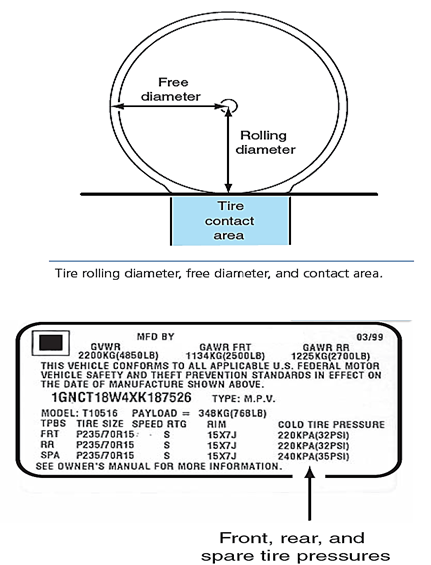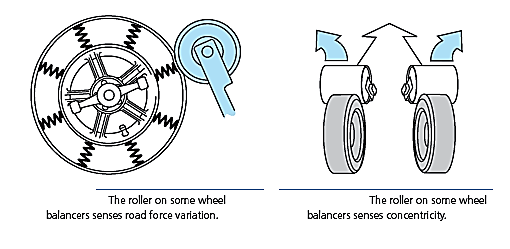←
Automobile Engineering
Tire Contact Area
Introduction:
The tire contact area refers to the area of the tire that is in contact with the road surface when the tire is supporting the vehicle weight. Tire deflection is the difference between the free diameter and the rolling diameter of the tire.
Tire rolling diameter, free diameter, and contact area:

- The tire free diameter is the distance of a horizontal line through the center of the spindle and wheel to the outer edges of the tread.
- The tire rolling diameter is the distance of a perpendicular straight line through the center of the spindle to the outer edges of the tread when the tire is supporting the vehicle weight.
- The rolling diameter is always less than the free diameter.
- The difference between the free diameter and the rolling diameter is referred to as deflection.
- Tire tread grooves take up excess rubber and prevent scrubbing as the tire deflects in the contact area.
Tire Placard and Inflation Pressure
- On many vehicles, the tire placard is permanently attached to the rear face of the driver’s door.
- This placard provides tire information such as maximum vehicle load; tire size, including spare; and cold inflation pressure, including spare.
- Tire pressure is carefully calculated by the vehicle manufacturer to provide satisfactory tread life, handling, ride, and load-carrying capacity.
- Most vehicle manufacturers recommend that tire pressures be checked cold once a month or prior to any extended trip.
Tire Motion Forces
- Tires must have equal stiffness in the sidewalls around the tire.
- If a tire does not have equal stiffness in all areas around the tire sidewalls, it may cause a vibration when driving.
- This vibration is called road force variation and produces a vibration similar to the vibration caused by improper wheel and tire balance.
- Modern wheel balancers have a roller that is forced against the tire tread during the balance procedure, and this type of balancer detects road force variation.
